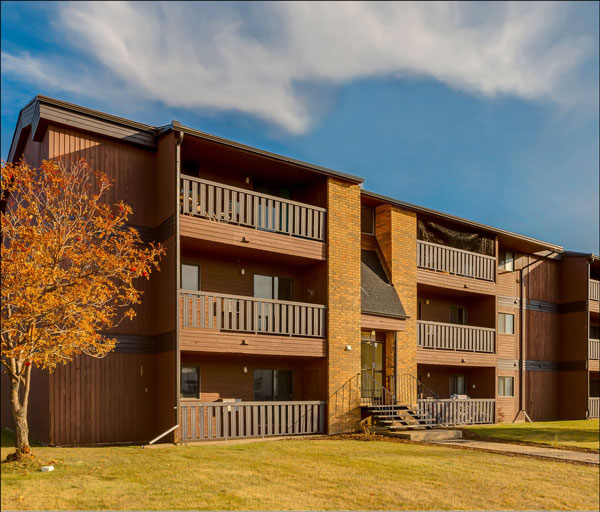The call has gone out from all levels of government for more affordable homes across Canada.
However, solutions to the country’s housing needs must simultaneously address carbons and GHGs.
Rather than simply build new or tear down and rebuild some resolution can also be found by taking another look at existing buildings, particularly low and mid-density multi-family structures.
Through a major financing offered by Crown Corporation, the Canada Investment Bank (CIB), a privately-held Canadian REIT is tackling both the housing and emission issues head-on.
Avenue Living Real Estate Core Trust owns and operates $3.7 billion in aggregate assets. These include hundreds of multi-family holdings in North America, offering what the company calls “workforce housing” for those over-qualified for subsidised affordable housing but unable to enter today’s competitive high-priced rental and new housing markets.
In mid-July, Avenue Living signed a breakthrough financing agreement with the CIB to improve building systems and living conditions in more than 6,800 apartments across 200 of their multi-unit residential buildings in Western Canada. The CIB financing will cover 80 per cent of the required $150 million investment required for Avenue Living to undertake major retrofits. The goal is to reduce GHG emissions by 30 to 50 per cent through upgrades to heating, ventilation and other operational energy improvements.
The CIB’s involvement is significant for its sheer size, the largest in this asset class to date. Overall, the agreement falls well within the parameters of the bank’s Building Retrofits Initiative to provide attractive financing to reduce investment barriers to the decarbonization of buildings that drive carbon savings.
Each building, all built before 2000, has individual challenges and therefore will have individual retrofit plans, explained Avenue Living’s founder and CEO Anthony Giuffre.
“The project will focus on onsite renewable energy generation, low-carbon heating and cooling systems, sensors and smart thermostats, optimized air filtration, water and vapour management, as well as energy consumption strategies,” Giuffre said. “These particular markers are going to have a dataset, and that dataset is going to be able to very quickly illustrate what we need to do to a specific building.”
“What makes our program unique it’s not just the dollar size but two other things,” Max Graham, Avenue Living’s senior vice-president of financial planning and analysis, told the Daily Commercial News.
He explained that Avenue Living is the only multifamily operator under this CIB program and the only operator of any type that touches so many buildings.
While Avenue Living’s GHG targets don’t necessarily meet today’s “deep retrofit” definition, that being GHG reductions exceeding 50 per cent, the projected reductions are nevertheless significant and easily exceed criterion set out by the CIB.

For planning, execution and verification purposes, the CIB will be using the international building certification program called IREE (Investor Ready Energy Efficiency™) created through the global initiative known as the Investor Confidence Project. The IREE program is overseen in Canada by the Canadian Green Building Council.
“Part of our program is the 20-year commitment to provide measurement and verification of how these sites perform,” said Ward Woolgar, senior vice-president of capital investment.
He explained how Avenue Living will strategically employ a variety of specialists with expertise in areas of sustainability, architecture, structural engineering and solar. That will result in a holistic plan for automation, integrated into a connected building system through sustainability solution provider Catlys.
It will be an ongoing development program, says Woolgar.
“Measurement and verification is essential to ensuring that, at a minimum, we continue to operate as efficiently as the project was intended. In conjunction with our intention to apply machine learning to our automation systems, our goal is to leverage this information to identify opportunities for continuous improvement.”
Avenue Living’s program addresses operational GHGs over years to come. However, what is also important is that retrofitting buildings with decades of useful life ahead locks in their existing embodied carbon while eliminating the emission of carbons and GHGs associated with demolition and new construction.
John Bleasby is a Coldwater, Ont.-based freelance writer. Send comments and Inside Innovation column ideas to editor@dailycommercialnews.com





Recent Comments
comments for this post are closed